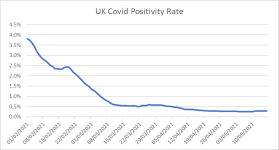Seems to be effective if so. Apparently a significant number of people queueing for their vaccine in Bolton yesterday were from a demographic which has been eligible for vaccination for some time.
Good, so they should.
We also shouldn’t stay in lockdown because those people are in hospital/die.
The Indian version is in a few counties now and they are all cracking on with unlocking.


